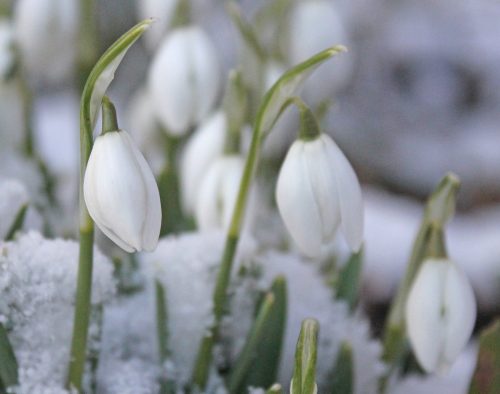Per la Santa Candelora se nevica o se plora, dell’inverno siamo fora, ma se è sole o solicello, siamo sempre a mezzo inverno
(“For the Holy Candelora, if it snows or if it rains, we are through with winter, but if there is sunshine or even just a little sun, we are still in the middle of winter”)

Candelora is a Roman Catholic religious festival celebrated in Italy on February 2. This year the day is also the American Groundhog Day, Super Bowl of football – and another day of the impeachment proceedings for President Trump. The Presentazione del Signore (Presentation of Our Lord) had been called the Feast of the Purification of the Virgin Mary.
It is more popularly called the feast of Candelora and in English-speaking countries, it is known as Candlemas Day (Candle Mass).
On Candlelora, all the candles to be used in the church throughout the year are consecrated as the symbolic “light of the world.”
At one time, the custom that a Jewish woman, including Jesus’ mother, would be considered impure for the 40 days after the delivery of a male child and were not allowed to worship in the temple. After the 40 days, these women were brought to the temple to be purified.
February 2 is 40 days after December 25, the day the Church marks the birth of Jesus. This traditional Christian festival also marks the presentation of the infant Jesus in the temple, a holiday was observed by Christians in Jerusalem as early as the fourth century AD. By the middle of the fifth century, the celebration included lighting candles to symbolize Jesus Christ as the light, and the ritual of blessing of the candles became common practice around the eleventh century.
The “coincidence” of our Groundhog Day being on the same day is one of the weather. As the proverb of weather lore stated on the top of this post shows, noting the weather on February 2 is supposed to predict the weather for the remaining six weeks of winter.
Is it another coincidence that February 2 is also a cross-quarter day, halfway between the winter solstice and the spring equinox? No coincidences. Some people of the Northern Hemisphere have believed for millennia that if the sun comes out at the mid-way point between winter and spring, winter weather would continue for another six weeks. I have always thought that it seems more logical that NO sun on this day would suggest that winter would continue, but that’s not the tradition.
Since the sixteenth century, North American folklore has followed some old European traditions that if on February 2 a groundhog/woodchuck comes out of its hole after winter hibernation and fails to see its shadow because the weather is cloudy, winter will soon end. If on the other hand, it is sunny and the groundhog sees its shadow, it will retreat into its burrow, and winter will continue for six more weeks.
The weakest part of our modern American celebration is that those poor groundhogs do not “emerge” naturally from their burrows because of some internal clock, environmental conditions or planetary magic. They are forced into the public.
There are some scientific bases for using signs in nature to predict the change of seasons and weather. Our Groundhog Day and Candlelora has no scientific basis.
My friend, Patricia, lives in Florence and might be celebrating Candelora (‘Candelaia’ in Tuscan dialect) there this weekend. It is a tradition in Tuscany that goes back to the Middle Ages. Florentine churches still distribute holy candles to parishioners on this day.












